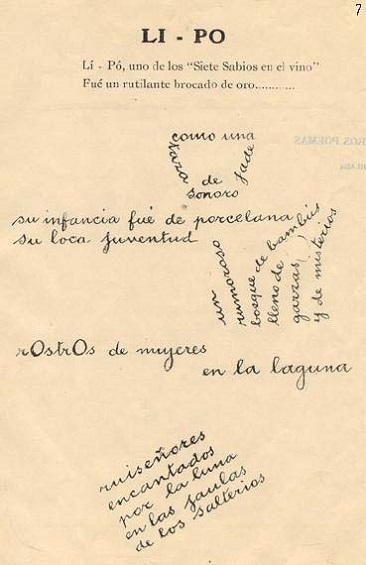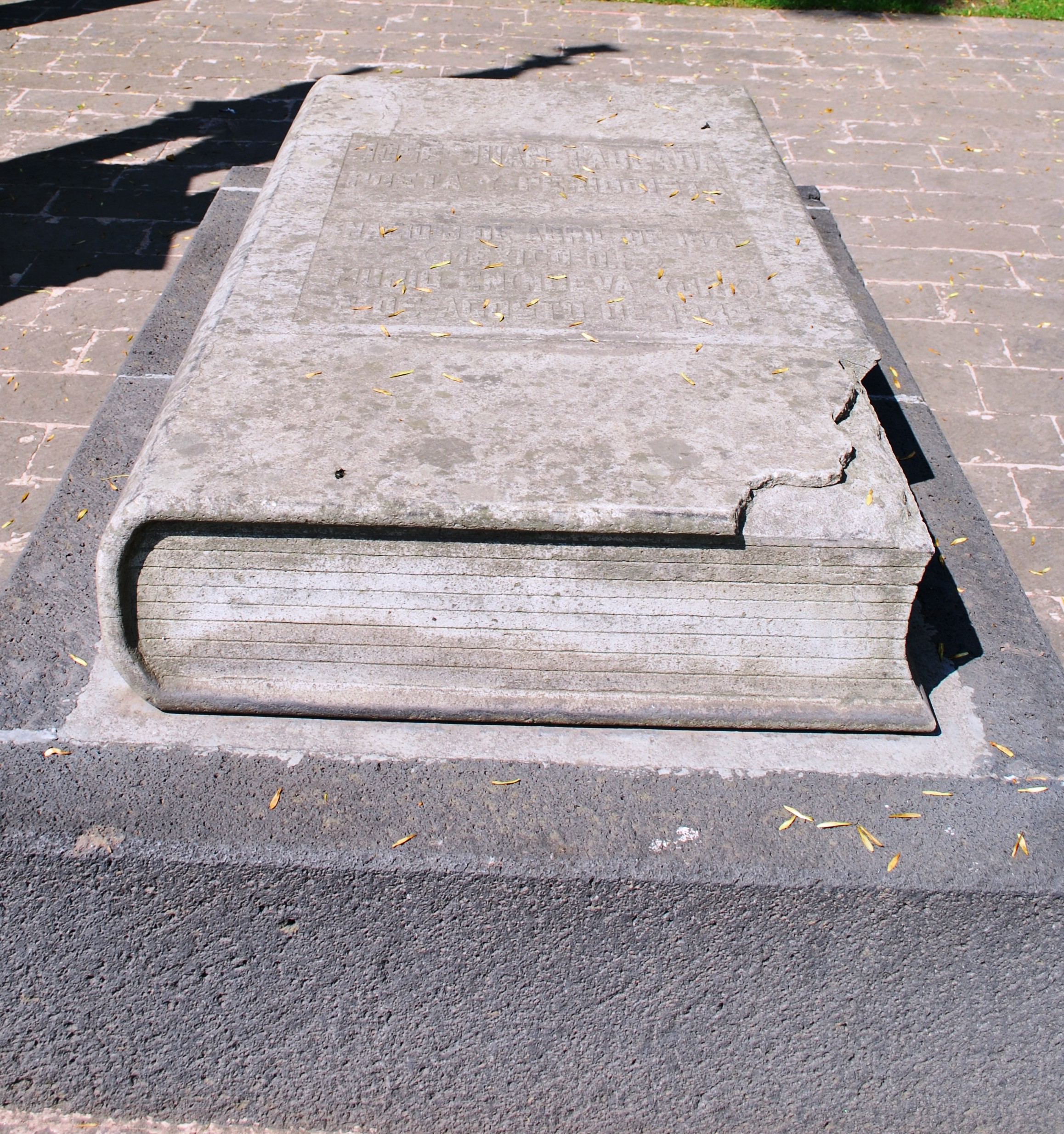José Juan Tablada on:
[Wikipedia]
[Google]
[Amazon]
José Juan de Aguilar Acuña Tablada (April 3, 1871 – August 2, 1945) was a Mexican
 From early on, he became interested in Japanese aesthetics and travelled to Japan for some months in 1900. This left its influence on his work and culminated in a book on the artist
From early on, he became interested in Japanese aesthetics and travelled to Japan for some months in 1900. This left its influence on his work and culminated in a book on the artist
 Tablada is recognized as among the originators of modern Mexican poetry and is credited with the introduction of
Tablada is recognized as among the originators of modern Mexican poetry and is credited with the introduction of
p.153
/ref> After Tablada's death,
Un día... Poemas Sintéticos
', 1919 *
', 1920 * '' Madrigales ideográficos'', 1920 * ''Retablo de memoria de Ramón López Velarde'', 1921 * ''El jarro de flores'', 1922 * ''Intersecciones'', 1924 * ''La feria: poemas mexicanos'', 1928 * ''Del humorismo a la carcajada'', 1944
Free University of Mexico, Faculty of Philosophy and Literature
{{DEFAULTSORT:Tablada, Jose Juan 1871 births 1945 deaths Burials in Mexico 20th-century Mexican writers 20th-century Mexican male writers Mexican male poets Haiku poets Writers from Mexico City
poet
A poet is a person who studies and creates poetry. Poets may describe themselves as such or be described as such by others. A poet may simply be the creator ( thinker, songwriter, writer, or author) who creates (composes) poems ( oral or wri ...
, art critic and, for a brief period, diplomat. A pioneer of oriental studies, and champion of Mexican art, he spent a good portion of his life living abroad. As a poet, his work spans from the fin-de-siècle style to avant-garde
The avant-garde (; In 'advance guard' or ' vanguard', literally 'fore-guard') is a person or work that is experimental, radical, or unorthodox with respect to art, culture, or society.John Picchione, The New Avant-garde in Italy: Theoretical ...
experimentalism. He was an influential early writer of Spanish-language haiku
is a type of short form poetry originally from Japan. Traditional Japanese haiku consist of three phrases that contain a ''kireji'', or "cutting word", 17 '' on'' (phonetic units similar to syllables) in a 5, 7, 5 pattern, and a ''kigo'', or s ...
.
Career
Tablada was born inMexico City
Mexico City ( es, link=no, Ciudad de México, ; abbr.: CDMX; Nahuatl: ''Altepetl Mexico'') is the capital city, capital and primate city, largest city of Mexico, and the List of North American cities by population, most populous city in North Amer ...
and studied at Chapultepec Castle. He at first worked for the national railways. In 1890, aged 19, he began contributing to magazines and newspapers as a journalist, essayist and poet. In 1894 his rhythmic and intricate poem "Onix" brought him renown. ''Florilegio'', his first collection of poetry, was published in 1899 and established him as one of Mexico's pioneer 'modernists', although at that period such writing approximated the style of the French decadent movement
The Decadent movement (Fr. ''décadence'', “decay”) was a late-19th-century artistic and literary movement, centered in Western Europe, that followed an aesthetic ideology of excess and artificiality.
The Decadent movement first flourishe ...
.
 From early on, he became interested in Japanese aesthetics and travelled to Japan for some months in 1900. This left its influence on his work and culminated in a book on the artist
From early on, he became interested in Japanese aesthetics and travelled to Japan for some months in 1900. This left its influence on his work and culminated in a book on the artist Hiroshige
Utagawa Hiroshige (, also ; ja, 歌川 広重 ), born Andō Tokutarō (; 1797 – 12 October 1858), was a Japanese ''ukiyo-e'' artist, considered the last great master of that tradition.
Hiroshige is best known for his horizontal-format l ...
(1914) and a general work, ''En el país del sol'' (In the land of the sun, 1919). The latter was made up of a selection of his articles on Japanese subjects over the years, in particular those arising from his 1900 visit. In addition he had brought back a large collection of ukiyo-e
Ukiyo-e is a genre of Japanese art which flourished from the 17th through 19th centuries. Its artists produced woodblock prints and paintings of such subjects as female beauties; kabuki actors and sumo wrestlers; scenes from history and folk t ...
prints that are now in the National Library of Mexico
The National Library of Mexico ( es, Biblioteca Nacional de México) is located in Ciudad Universitaria, the main campus of the National Autonomous University of Mexico (UNAM) in Mexico City. It was first established on November 30, 1867.
As a n ...
.
During the turmoil of the Mexican Revolution, Tablada spent time in Paris
Paris () is the Capital city, capital and List of communes in France with over 20,000 inhabitants, most populous city of France, with an estimated population of 2,165,423 residents in 2019 in an area of more than 105 km² (41 sq mi), ma ...
and then in New York City
New York, often called New York City or NYC, is the most populous city in the United States. With a 2020 population of 8,804,190 distributed over , New York City is also the most densely populated major city in the Un ...
until he was appointed a cultural secretary in the Foreign Service in 1918, serving in Bogotá, Caracas, and Quito. Unable to adapt to the altitude of the last, he resigned and thereafter spent much of his time in New York until 1935. There he ran a bookshop and founded the magazine ''Mexican Art and Life''. At this period he was championing Mexican art, being among the first to draw attention to the art of the Pre-Columbian period, but also supporting the modernist painters José Clemente Orozco and Diego Rivera
Diego María de la Concepción Juan Nepomuceno Estanislao de la Rivera y Barrientos Acosta y Rodríguez, known as Diego Rivera (; December 8, 1886 – November 24, 1957), was a prominent Mexican painter. His large frescoes helped establish the ...
.
After his return to Mexico, he published a partial autobiography, ''La feria de la vida'' (1937), and was elected a member of the Mexican Literary Academy in 1941. He was appointed Vice-Consul for New York in 1945 but died soon after his arrival there. Later his remains were repatriated and buried in the Rotunda of Illustrious Persons on November 5, 1946.
Poetry
haiku
is a type of short form poetry originally from Japan. Traditional Japanese haiku consist of three phrases that contain a ''kireji'', or "cutting word", 17 '' on'' (phonetic units similar to syllables) in a 5, 7, 5 pattern, and a ''kigo'', or s ...
to his country. His collection ''Un dia'' (1919) contains 38 ‘synthetic poems’ and has been described as “the first book of original haiku written by a poet outside Japan”. It was followed by a collection of calligrams, ''Li-Po y otros poemas'' (1920), and in 1922 by ''El jarro de flores'', containing a further 68 haiku. His haiku are distinguished by their aesthetic quality, as for example in
:::Slight willow,
::almost gold, almost amber,
:::almost light….
and by their humour:
::Moonlit roofs beyond the window,
::Chinese shadows inky black
::and the Chinese music of cats.
In 1921 his friend the composer Edgard Varèse incorporated an earlier piece by Tablada, ''La Cruz del Sur'', in his ''Offrandes'' (1921), and two years later dedicated his ''Hyperprism'' to the poet.Olivia Mattis, “Varèse and Dada” in ''Music and Modern Art'', Routledge 2014p.153
/ref> After Tablada's death,
Luis Sandi
Luis Sandi Meneses (22 February 1905, Mexico City – 1996), was a musician, teacher and composer.
Biography
The complete name is Luis Sandi Meneses. Born February 22, 1905 in Mexico City, the only child of Genaro Sandi and María Meneses. ...
set ten of his haiku for voice and piano (''Diez hai-kais para canto y piano'', 1947).
Bibliography
Poetry
* ''El florilegio'', 1899 * ''La epopeya nacional'', Porfirio Díaz, 1909 * ''Hiroshigué: el pinto de la nieve, de la lluvia, de la noche y de la luna'', 1914 * ''Al sol y bajo la luna'', 1918 *Un día... Poemas Sintéticos
', 1919 *
', 1920 * '' Madrigales ideográficos'', 1920 * ''Retablo de memoria de Ramón López Velarde'', 1921 * ''El jarro de flores'', 1922 * ''Intersecciones'', 1924 * ''La feria: poemas mexicanos'', 1928 * ''Del humorismo a la carcajada'', 1944
Essays
* "La defensa social: historia de la campaña de la División del Norte", 1913. * "Historia del arte en México", 1927 * "Hongos mexicanos comestibles: micología económica", 1983References
Most details are taken from the biography of the poet at thFree University of Mexico, Faculty of Philosophy and Literature
External links
* *{{DEFAULTSORT:Tablada, Jose Juan 1871 births 1945 deaths Burials in Mexico 20th-century Mexican writers 20th-century Mexican male writers Mexican male poets Haiku poets Writers from Mexico City